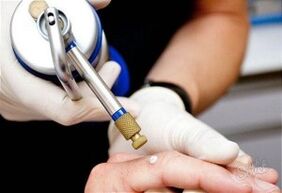Papilloma ointment is often used to combat skin growths. The effectiveness of this agent depends on the composition, the nature of the action, the degree of infection. Papillomas on the body and mucous membranes appear when the papilloma virus enters the body.
Therefore, the use of ointments, creams, gels usually has only a local effect. The virus does not disappear from the blood. The use of ointment and at the same time antiviral drugs, strengthening the immune system will help avoid relapses.
Ways to remove papillomas
Papillomas are neoplasms of the skin that are benign. In very rare cases, the papilloma can degenerate into a malignant tumor. If the papilloma does not cause discomfort (physical or emotional), then you cannot remove it.

But if the neoplasm causes pain, for example when rubbing on clothes, it must be treated without fail. It is best to consult an experienced doctor about the possibility and choice of method of treatment of papilloma. Experts often recommend papilloma removal by one of the following methods:
- Surgical (excision under local anesthesia).
- Liquid nitrogen (cryodestruction).
- Acid.
- Laser.
- Electric shock (electrocoagulation).
Many people use folk remedies to fight papillomas. Before using traditional methods, you should consult a doctor. Some products cannot be used, for example, on the face, others can cause individual side effects.
The use of ointments to remove papillomas, as opposed to immediate surgical, laser removal, refers to lighter methods of dealing with tumors.
Types of ointments
All ointments used to fight papillomas can be divided into 2 types:
Ready-made ointments are sold in pharmacies or specialty stores, there are 3 types:
- Ointments based on active acids.Known antiseptics have anti-inflammatory properties. The use of such ointments for the treatment of facial papillomas is not recommended. In addition, the drugs can cause individual side effects and are not recommended for children and people with kidney failure. The effect occurs after a few weeks of use. These ointments are not effective in all cases.
- Plant-based ointments.The active components of the ointments penetrate deep into the roots of the papilloma, and the powders have a detrimental effect on the papilloma itself. As the products consist of medicinal herbs, an allergic reaction in people prone to allergies is not excluded. Herbal medicines, like acid-based preparations, do not act on the cause of the disease, but help to eliminate its external manifestations.
- Antiviral ointments.From the name it is clear that such ointments act on the cause of papillomas - a virus. Drugs disrupt the development and reproduction of the virus.
Ointments can also be made at home. The most famous and effective is the vinegar ointment. Washed clean chicken egg is placed in a glass, pour vinegar (essence). Close tightly. When the shell dissolves, remove the film that was under the shell, add internal fat, mix well. Store the ointment in the refrigerator, the shelf life is several years.
Garlic-Vaseline ointment, ointments based on celandine and Vaseline, vinegar and flour are also prepared at home. Homemade ointment can damage healthy skin and should be used very carefully.
Skin treatment after papilloma removal
The use of any skin care products, including ointments after papilloma removal, should be discussed with your doctor. The skin at the site of removal is thin, delicate, the infection can easily get into the wound.
The doctor will advise the means of wound healing, will tell about the possibility of using cosmetics. It is not recommended to use any means until the wound has healed.
After getting rid of papillomas, you should carefully monitor the skin, follow the doctor's recommendations, strengthen the immune system to prevent the appearance of new papillomas.













































































